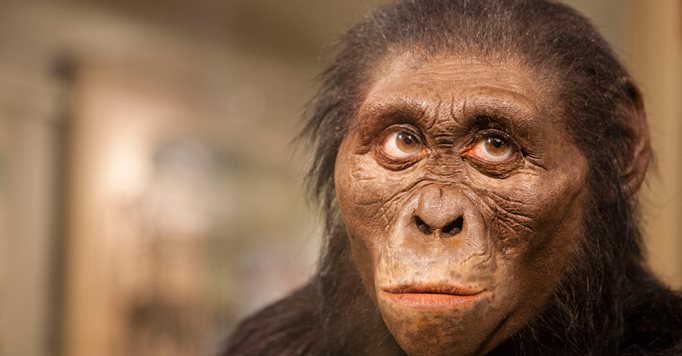
The Australopithecus, a prehuman genus to which the fossil of the famous Lucy, discovered in Ethiopia in 1974, belongs, did not possess highly developed intellectual capacities.
Our current gorillas, chimpanzees and orangutans would be even brighter than our distant Australopithecus ancestors who inhabited East Africa between 2 and 4 million years ago.
This theory put forward by Professor Roger Seymour and his Australian colleagues at the University of Adelaide challenges the hypothesis that Australopithecus were smarter than apes because of their larger brains.
Our results are unexpected because anthropologists generally assumed that intelligence was directly related to brain size.
Roger Seymour
Not just a question of size
In his work, the Australian team measured the cerebral metabolism (TM) of 96 current great apes, such as the gorilla and orangutan, and estimated that associated with 11 fossil skulls of Australopithecus.
“The first intuition would be that the size of the brain should be able to predict the intellectual abilities of a species because a large brain contains more neurons than a smaller one,” explains Professor Seymour. “But when we dwell a little on brain mechanics, we find that cognition is based not only on the number of neurons, but also on the number of connections between them, called synapses.”
MC is roughly equivalent to blood flow in the brain and is, according to the researchers, a better tool for assessing the cognitive abilities of a species than just the size of its brain.
These connections govern the flow of information in the brain. Greater synaptic activity translates into better information processing.
Landmarks
- The mammalian brain contains between 100 million and 100 billion neurons depending on the species;
- The neuron is a specialized cell designed to transmit information to other nerve, muscle and glandular cells;
- Not less than 70% of the energy in the brain is devoted to the synaptic activity of neurons;
- This amount of energy comes from the blood.
Holes and synapses
In primates, the size of the holes in the skull, through which the arteries reached the brain, can be used to evaluate cerebral blood flow.
Dr. Seymour ‘s team has analyzed in detail these holes in Australopithecus to calculate the flow in the internal carotid arteries.
These blood vessels are important because they provide most of the blood to the brain, so they provide the energy needed to work synapses that are in a way the contact area that connects neurons to each other.
The researchers had previously tested and calibrated their calculation technique in humans and other mammals.
Their finding is clear: the blood flow in the brains of modern apes is higher than that of the brain of Australopithecus, which was however as big, and even bigger.
Very intelligent monkeys
- Koko the Gorilla has learned to communicate with more than 1,000 characters;
- The chimpanzee Washoe has learned about 350 signs;
- The bonobo Kanzi developed a good understanding of English syntax, and was also able to make stone tools.
For example, the results show that the blood flow into the cerebral hemispheres of Koko was about twice that of Lucy.
Because blood flow would be a better indication of information processing capacity than brain size alone, Koko seems to have been smarter than Lucy.
Sinetta Sing born and raised in Newcastle. She has written for The Daily Mail, The Prague Post and The Sun. In regards to academics, Sinetta earned her BBA from Durham University Business School. Sinetta covers health and science stories here at Tech Droid.





